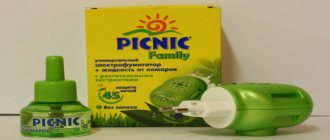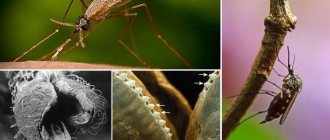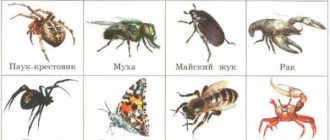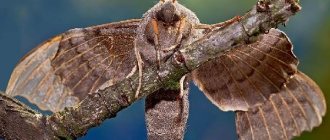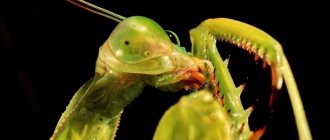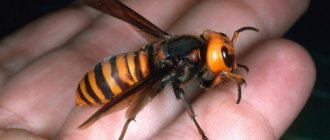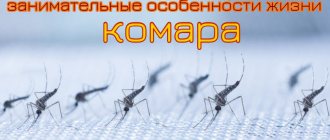At the moment, science has described more than 50 thousand species of ticks, some of which actually fit the definition of a white tick. May appear white:
- Skin mites parasites
- Mites pests of horticultural crops
- Dust mites
- Blood-sucking ticks
The first three categories of mites are so small in size that it is impossible to distinguish them with the naked eye, except for some garden pests, for example, spider mites, and even then with great difficulty. In this same article, the blood-sucking white tick will be discussed.
Which ticks are white in color?
In general, dozens of species of parasitic mites fall under the definition of “white”. But... almost all of them are microscopic in size, and therefore it is impossible to see them with the naked eye. More precisely, in some cases this can be done. For example, scraping out the contents of the ear of a dog suffering from otodectosis onto dark paper... But still, this is not the case.
Usually white ticks are quite visible, “fat” and quite large creatures that anyone can see with the naked eye.
In their normal state, females and males of these parasites are not impressive in size: their body length does not exceed a few millimeters. But males have one interesting feature: they have a small, hard shield on their cephalothorax. It cannot grow in size, stretch, or otherwise change its shape.
Why are we telling all this? This is necessary to understand well some of the life functions of parasites. Contrary to the opinion of some breeders, both females and males feed on blood equally readily.
But if the former can attach themselves to animals and hang there for hours, satiating themselves with their blood, then the “men” cannot do this. In addition, they quickly fall off the animal’s body, which is why the very fact of their attack often goes unnoticed.
But with females the situation is exactly the opposite. They do not have a shield on the cephalothorax, and therefore nothing interferes with the saturation process in their case. Therefore, they can hang on the animal for days, constantly sucking on blood.
But what ticks are white in color, besides the “overfed” female parasites belonging to the ixodid family?
Yes, there are. But they, as we mentioned above, are microscopic in size. In particular, the causative agents of otodectosis, demodicosis, sarcoptic mange and other tick-borne infestations can boast of a white body color. But considering how modest their size is, this does not matter much: the parasites will not show up “to the eye” anyway.
Where do spider mites on plants come from?
The female spider mite and the eggs she lays overwinter in the soil and under the bark of trees. In the spring, they colonize nearby suitable weeds, and later, cultivated plants.
The spider mite is an animal, which means it has the ability to actively move. Even if he leads a sedentary lifestyle, sooner or later food runs out in his old place, and he starts looking for a new place to live. Spider mites travel on their webs with the help of the wind and slowly crawl over short distances.
How do spider mites appear in an apartment? We introduce the pest to indoor and greenhouse plants with new seedlings, soil, and things. Spider mites can also enter an apartment on their own: through open window sashes, descending from upper floors or nearby trees.
Photo credit: Olllli, CC BY-SA 3.0
Harm and benefits of red mites
There are several forms of parasitism of red beetles:
- External. The principle of nutrition is similar to that of. However, when parasitized, red beetles form a long specific tube that perforates the epidermis, which is called a stylostome, which leads to severe damage to the tissues of the host. Painful sensations remain at the site of suction for a long time.
- Intracavity. Red beetles are localized in the respiratory tract of birds and mammals. Favorable conditions help reduce the mortality rate of red beetles.
- Immersion under the skin. In this way, individuals have to parasitize, choosing salamanders, frogs, and lizards as victims.
For humans, the velvet tick is not as dangerous as the ixodid tick. It is not a carrier of encephalitis, borreliosis (Lyme disease), or ehrlichiosis. People become random victims. The red tick can bite during contact with the ground or while in nature. It attaches in a matter of minutes and can remain on a person for a long time. Like a relative of the ixodus, it selects the armpit area, the back of the head, and the chest area. Many people do not feel the moment of the bite, and it is difficult to notice a small creature due to its microscopic size. A few days after the bite, the victim feels severe itching, notices swelling and the appearance of a papule. Scratching may cause a secondary infection. A single bite heals on its own within a week and does not require treatment in a medical facility.
Red mites pose a threat to life and health in tropical countries, where they are carriers of the infection - tsutsugamushi. Clinical manifestations: fever, severe headache, tissue swelling, rash. The symptoms are similar to typhus. In the absence of qualified medical care, the probability of death is up to 40%.
In countries with outbreaks of infection, measures are taken to get rid of red mites, which boil down to the use of chemicals.
To avoid being bitten by velvet ticks, it is enough to follow simple safety measures: use repellents, do not walk barefoot on the ground or grass, and when visiting the forest, wear clothes that cover the skin as much as possible.
Varieties
If you are seriously thinking about how to deal with spider mites on indoor plants, then you should first find out what type they are and can be encountered.
So far, scientists have identified the six most common:
- Standard. First of all, it colonizes the lower leaves, and only then, when the family grows, it begins to infect all living things further, killing almost everything in its path. Usually, fighting it without chemicals is useless.
- Red is a large variety of pest. These individuals reproduce well at high temperatures, which leads to the death of almost everything animate where it settles.
- False is an extremely dangerous type. It is extremely small in size, it does not weave a web and does not leave any traces of its presence, so its arrival will be known only when the fetus inevitably dies.
- Atlantic. It usually infects exotic palms and bushes, but can spread to any other. This species is rare. It multiplies when there is high humidity in the room.
- The cyclamen reptile loves high air moisture. Visually similar to a large layer of dust, so it is often confused with it.
- Wide is one of the easiest parasites to resist. Although eggs are laid every few days, the females do not dive or hide, so it is extremely easy to fight it. Its appearance is immediately noticeable by a large layer of dust. Reviews from people confirm that it is quite easy to remove.
Treatment with folk remedies
The use of drugs prepared according to folk recipes allows you to get a positive result only with a slight spread of pests.
When using this method in the fight against spider mites, it is important to remember that the parasites can only be completely destroyed through chemical treatment.
The most effective folk remedies are:
- Garlic infusion (170 grams of garlic cloves are poured into 1 liter of water and infused for 5 days).
- Tincture of dandelion roots (to prepare the composition, 30 grams of roots are soaked in 1 liter of cold water).
- Decoction of citrus fruits (100 grams of citrus peels are poured with water, boiled and infused for three days).
- Onion tincture (15 grams of pulp is poured into 1 liter of water and left for 7 hours).
Advantages of folk remedies:
- availability;
- ease of preparation and use;
- environmental cleanliness.
Argaceae
The family consists of 12 species. They have a characteristic ovoid shape. Sometimes you can even say oval. There is no point to the head. The legs are often hidden under the shell.
In some ways, these individuals resemble bedbugs. The Persian tick is constantly confused with them. How can you tell them apart? The bug has a hard chitinous cover, while argasids have a soft, leathery shell.
Their color changes due to blood. Those who are full are purple in color, while those who are hungry are gray. They can infect cats, birds, and humans. The resilience of these parasites is amazing. Some of them are capable of fasting for up to 11 years. They are waiting for the right moment.
These animals are dangerous not only because they carry tick-borne fever, relapsing fever, and borelliosis, but also because of their bite. The saliva of these arachnids is toxic, so the consequences of a bite are rash, itching, and redness. Some species are as feared by Mexicans as rattlesnakes. The toxins cause paralysis and some animals die from their bite. Mammals that are infected with Argasidae often behave restlessly. The animal becomes depressed.
Let's look at the main photos of tick types and names to understand the differences:
- Caucasian. Distribution area: Caucasus, southern Ukraine. He carries a dangerous disease - endemic relapsing fever.
- Shell-type. It often infects pigeons, and there are cases of human infection.
- Poselkovy. Carries spirochetes that cause borelliosis. Such an individual is dangerous due to the method of transmission of the disease. The arachnid can transmit the virus to its offspring. Thus, not only the tick, but also the virus multiplies.
Which ticks are white?
More than 50 thousand arachnid insects are known to science, of which a good third are mites, but none of them, under natural conditions, are white in color. Visually, mites may appear white due to the coating or the state they are in at the moment. So, which ticks are white?
Turn white when they drink blood:
- Forest.
- Poselkovy.
- Taiga.
- Canine.
Scabies, dust and spider mites have a white coating, but they are microscopic. Flour mites have a white edge but are not parasitic on dogs. Ear mites are almost white in color. However, in fact, these parasites have an almost transparent shell.
Ear
The second name is kozheed. A common animal parasite. Ear mites are common in cats and dogs. It is localized in the auricle, makes passages there, leading to inflammation, suppuration, itching, and other unpleasant symptoms. The tick is white, body size 1-2 mm. You can examine the parasite using a magnifying glass.
Infection occurs on the street. Within a few hours, a tick with a white belly crawls up to the ear and begins to parasitize. The diseases they cause are otodecosis and otodedecosis. Treatment is carried out with antiparasitic drugs. The duration of the course depends on the degree of damage to the animal.
Types of ticks
Where to go after a black tick bite
Everyone needs to know where to go if bitten by a tick. The main thing is that after removing a tick yourself, you do not need to throw it away.
Tick in vitro
The insect must be taken to the laboratory on the same day to be examined for existing diseases. If it is discovered that the tick has any infection, the attending physician will prescribe treatment that will need to be completed. Otherwise, the disease will become chronic; the nervous system and heart may be further affected, and perhaps all this will lead to disability.
The virus of dangerous diseases is found in the saliva of black ticks, which appeared from previously bitten sick animals. Having bitten a person or animal, a virus enters the wound along with saliva, which slowly develops for about a month and does not make itself felt.
Donating blood for analysis
Even if laboratory tests showed that the tick was not infectious, it is better to play it safe and check your health. You will need to donate blood, but not immediately after the bite, but after a few weeks to allow the virus (if any) to develop and be detected. Your local general practitioner can advise you on where to donate blood after a tick bite.
How to get rid of it: control measures
When the first signs of the presence of a mite on an orchid are detected, it is necessary to begin eliminating it without delay, since ignoring this problem will lead to the death of the affected plant and massive infection of other indoor crops.
Procedure:
- isolation of the affected specimen in a separate room;
- rinsing under running warm water;
- removing moisture from the sinuses and drying the plant.
If the white coating cannot be washed off with water, it is recommended to wipe the leaf blades with cotton swabs or pads soaked in water. To increase humidity, it is recommended to water the epiphyte, wrap it in plastic wrap and leave it in this form for no more than three days.
If oribatid mites are detected, several manipulations must be performed:
- remove the plant from the pot and clean it from the soil;
- dilute liquid laundry soap (1 tbsp/1 l) in warm water;
- soak the root system in the prepared solution and leave for 30 minutes, periodically shaking off mite eggs from the roots;
- repeat the soaking procedure 2-3 times, replacing the solution with a fresh one;
- remove damaged fragments;
- treat cut areas with activated carbon;
- plant the flower in clean soil.
After providing first aid to the orchid, it is necessary to begin its radical treatment.
Security measures
Of course, it is difficult to refuse a trip to nature, but this is not necessary, just take the problem seriously and do not neglect safety measures. The first thing to do is choose the right clothes. Choose a jacket or cardigan with cuffs and a collar that fits tightly to your neck, thereby protecting it. Be sure to wear hats. Choose pants that can be tucked into socks. Also, be sure to tuck your jacket into your pants. This will block access to your body. Inspect each other's clothing for ticks.
Parasites wake up with the first warmth and become active at a temperature of +5°. Optimal conditions are when the temperature does not exceed +20°. On hot days they are not active and hide in thickets and wet areas.
Not many people can resist picking a beautiful flower and smelling it. This is not worth doing. There are cases where, while sniffing a fragrant flower, the black-legged parasite entered the respiratory tract. It is very difficult to remove it from this area.
Signs of infection
The presence of a mite on an orchid can be determined by the following signs:
- the presence of whitish or small gray inclusions on the leaf plates;
- the formation of a silvery web on the back of the leaves;
- the appearance of brown spots (usually they are present on the axils of the leaves or at the base of the stem);
- drying of sheet plates along the edges with subsequent deformation;
- yellowing, curling and falling of leaves;
- the appearance of rot on the lower part of the stem (in the form of wet dark spots, which over time transform into depressions and holes);
- shortened peduncles, unusual for orchids.
When you press on the affected areas, a red-brown liquid appears.
What to do after a bite
Often, we ignore simple but very important actions that can protect us from dangerous diseases. If it so happens that you find this parasite on yourself, you can do two things: go to the hospital, or remove it yourself. But in both cases, the insect must be preserved.
Next, the correct thing to do is as follows. The insect is taken to a specialized laboratory where research is carried out for the presence of any diseases. Such simple actions make it possible to recognize a dangerous disease at a very early stage. Then the doctor can prescribe treatment that will prevent the infection from developing and serious consequences can be avoided.
The virus itself is found in the saliva of the parasite and if it is infected, then the bite is the site of infection. When the virus enters the body of a person or animal, it remains in the development stage for a month and does not manifest itself in any way, which poses a health hazard.
You can do it another way. It is enough to contact your therapist, explain the situation, and he will refer you for tests that will help identify the infection. But tests are not able to recognize the virus in the first days; the doctor will also tell you when it is best to conduct examinations.
Black mites
From a scientific point of view, there is no such thing as a “black tick”. And these arachnids received such a name among the people due to their color. They are actually a type of Ixodid tick and there are over 60 types of them. And to know how to distinguish a tick from other insects, you need to familiarize yourself with its appearance.
The size of a black tick against the background of a match
Black ticks are medium in size. When hungry, their bodies reach a length of about 3-5 mm, but after saturation, the size of the insects can increase by about 10 times. Black ticks have 4 pairs of limbs. On their head there is a cutting-sucking proboscis, which they use to feed. The tick bite is generally not felt, because The tick injects an anesthetic into the wound it cuts, and only then inserts its proboscis and begins to suck blood from the punctured blood vessel. The gnawing mouthparts of insects help them gnaw through a wound of the required size.
Chemicals: how to treat?
The main advantages of chemicals are as follows:
- providing effective protection against pests;
- ability to destroy large colonies;
- long-term effect (up to 2 weeks from the date of treatment).
The disadvantages include toxicity.
The most popular chemicals:
- Nissoran - contains the active component hexythiazox, highly effective in the fight against ticks at all stages of development. To treat the plant, 1 gram of powder is dissolved in 1 liter of water.
- Actellik - includes pirimiphosmethyl. To prepare a working solution, 1 ml of the drug is diluted with 1 liter of water. Treatment is performed 2 times with an interval of 10 days.
- Sunmite is a yellow-white powder containing pyridabene. Before use, it is diluted with water in a ratio of 1 g: 1 liter. Eliminates ticks at all stages of development.
- Anti -mite is an intestinal-contact toxic chemical that contains malathion. To prepare the solution, it is diluted with water in a ratio of 1 ml per 1 liter.
